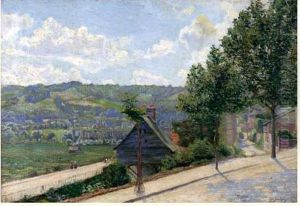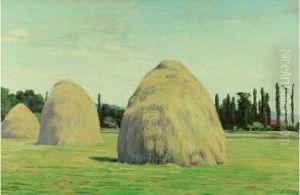Xavier Boutigny Paintings
Xavier Boutigny was a French painter born on July 14, 1828, in Pontoise, which is a commune in the northwestern suburbs of Paris, France. He belonged to the mid-19th century period and was known for his landscape paintings and his association with the Barbizon school, which was an art movement characterized by realistic and plein air pastoral scenes.
Boutigny's early life and training are not documented extensively, but like many artists of his era, he likely received formal art education and training. He was influenced by the works of the Barbizon school artists, such as Camille Corot, Jean-François Millet, and Théodore Rousseau, who focused on capturing the French countryside through their naturalistic and tonal qualities.
Throughout his career, Boutigny developed a style that embraced the Barbizon school's approach, focusing on the beauty of the natural landscape, the changing seasons, and the rural environment. His works often depicted scenes of the French countryside, forests, and rural life with a sensitivity to light and atmosphere, which was a hallmark of the Barbizon painters.
Boutigny exhibited his works at the Paris Salon, an official art exhibition of the Académie des Beaux-Arts in Paris, which was the greatest formal art event in the Western world at the time. His participation in such exhibitions helped to establish his reputation as a skilled landscape painter.
Xavier Boutigny's contributions to French landscape painting were appreciated by his contemporaries, and today, his works are considered to be a part of the rich tradition of 19th-century French art. He continued to paint and contribute to the French art scene until his death on October 27, 1907, in Pontoise. His legacy is preserved through his paintings, which continue to be displayed in museums and galleries, offering viewers a glimpse into the idyllic rural life of 19th-century France.

